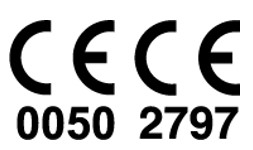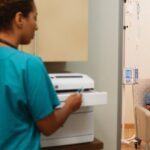Make the safety switch: 4 potential everyday safety hazards
Maintaining safety for both patients and healthcare workers can be a challenge. Adverse safety events such as errors, accidents and non-standardised procedures can strain the institution.
Making the #BDSafetySwitch goes beyond the optimisation of a single process or practice. Safety is a mindset, a culture that permeates every facet of healthcare.
Discover 4 of the top safety hazards and how the #BDSafetySwitch can benefit you, your team and your patients.
- Needlestick injuries
The global healthcare workforce suffers 2 million needlestick injuries a year, with about 44.5% of all healthcare workers having reported experiencing at least one event.1
Evidence suggests that when compared with conventional sharps, safety-engineered devices can help reduce the incidence of needlestick injuries, thus increasing vascular access safety.2
- Inaccurate medication delivery
When a syringe and a syringe pump are incompatible, patients can experience inaccurate fluid delivery or occlusion in the line, posing a serious threat to safety.3 A lack of flow continuity can lead to:3
- Delay of therapy
- Over-infusion or under-infusion
- Abnormal or unstable blood pressure
- Anxiety from loss of sedation
- Increased pain in critically ill infants
Interestingly, evidence suggests that the availability of more than one brand of syringe in a clinical area increases the risk of adverse drug delivery events.4
- Misconnection errors
Misconnection errors occur when medication delivery systems are erroneously connected via an unintended route, leading to wrong-route medication administration.5
Wrong-route medication errors can have significant safety consequences with high morbidity, mortality, patient suffering and expenses.5
Medication errors are considered preventable, and those of which result from misconnection errors can be reduced by:6
- Conducting regular, thorough staff training
- Ensuring healthcare workers always trace lines back to their origins before connecting or disconnecting
- Labelling high-risk catheters
- Introducing non-Luer lock connections (such as the neuraxial NRFit™ connection) to more easily distinguish various lines
- Drug contamination
With infusion therapy comes the inherent risk of drug contamination from microbiological, chemical or physical sources.7
Particulate drug contamination, defined as foreign, undissolved, mobile particles, can pose serious health risks to patients, including central venous catheter (CVC) obstruction, occurrence of potentially fatal embolism, deposits of calcium phosphate crystals in various organs during parenteral nutrition or systemic inflammatory response syndromes (SIRS).7
The use of filter needles, in-line filters and pre-filled syringes have all demonstrated to reduce glass particle drug contamination to help increase infusion and vascular access safety.7
Want to learn more about how you can make the #BDSafetySwitch?
References
- Bouya, S. et al. Global Prevalence and Device Related Causes of Needle Stick Injuries among Health Care Workers: A Systematic Review and Meta-Analysis. Glob. Health 86(1): 35 (2020).
- Frickmann H, Schmeja W, Reisinger E, et al. Risk Reduction of Needle Stick Injuries Due to Continuous Shift from Unsafe to Safe Instruments at a German University Hospital. Eur J Microbiol Immunol (Bp). 2016;6(3):227-237. doi:10.1556/1886.2016.00025
- US Food and Drug Administration. Syringe pump problems with fluid flow continuity at low infusion rates can result in serious clinical consequences: FDA safety communication. Available at: https://www.fdanews.com/ext/resources/files/2016/08/08-25-16-pumpsafetynotice.pdf?1480880246 (2016).
- Tooke LJ, Howell L. Syringe drivers: incorrect selection of syringe type from the syringe menu may result in significant errors in drug delivery. Anaesth Intensive Care. 2014 Jul;42(4):467.72.doi:10.1177/0310057X1404200407.PMID:24967761.
- Viscusi, E.R., Hugo, V., Hoerauf, K. et al. Neuraxial and peripheral misconnection events leading to wrong-route medication errors: a comprehensive literature review. Regional Anesthesia & Pain Medicine. 46:176–181 (2021). doi: 10.1136/rapm-2020-101836
- Rodziewicz TL, Houseman B, Hipskind JE. Medical Error Reduction and Prevention. Epub 4 Dec 2022. Accessed 25 Jan 2023 at: https://pubmed.ncbi.nlm.nih.gov/29763131/
- Perez M, Maiguy-Foinard A, Barthélémy C, Décaudin B, Odou P. Particulate matter in Injectable Drugs: Evaluation of Risks to Patients. De Gruyter. 2016 Jun 14;1(2). doi: 10.1515/pthp-2016-0004.
This list of references to third-party peer-reviewed material and the sites they are hosted on are provided for your reference and convenience only, and do not imply any review or endorsement of the material or any association with their operators. The Third-Party References (and the Web sites to which they link) may contain information that is inaccurate, incomplete, or outdated. Your access and use of the Third Party Sites (and any Web sites to which they link) is solely at your own risk.





